This small country located in eastern Africa, south of the equator, with a land area of only 945,000 square kilometers.
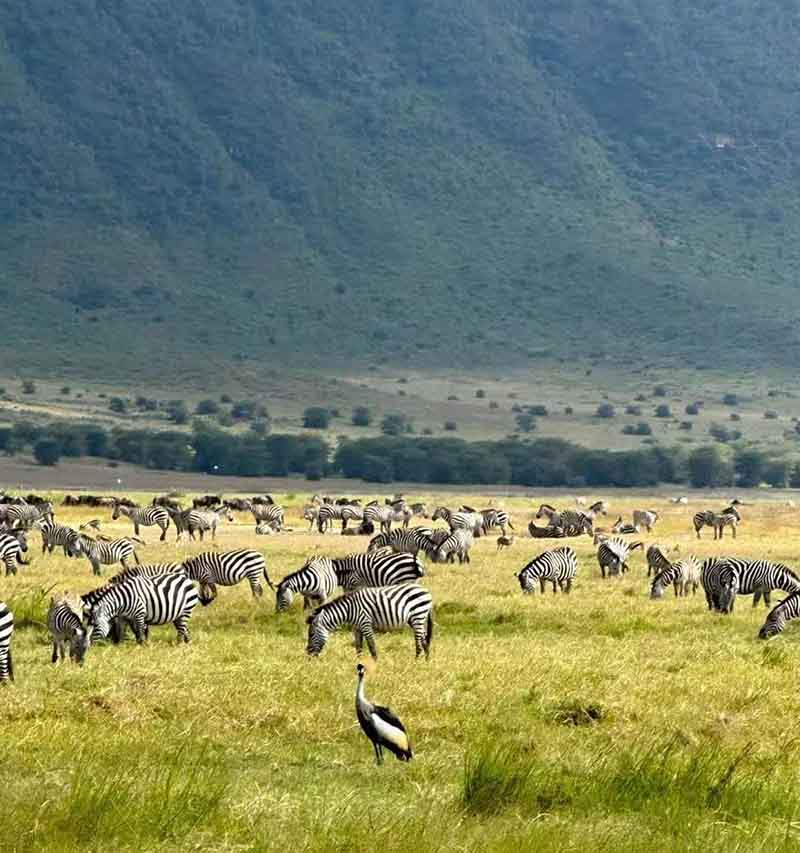
Not only has the towering Mount Kilimanjaro, the beautiful and spectacular scenery of Zanzibar Island; wild and seductive coexist in the Serengeti Savannah. It also allows you to witness the world’s greatest natural spectacle: the Great Wildebeest Migration.
Of course, in addition to East Africa’s top natural attractions, it is also rich in mineral resources.
Proven minerals include diamonds, gold, carbonates, and various gemstones. The total amount of major minerals ranks fifth in Africa.
Today’s article, let us together into Tanzania, appreciate the local specialty gemstone.
Emerald:
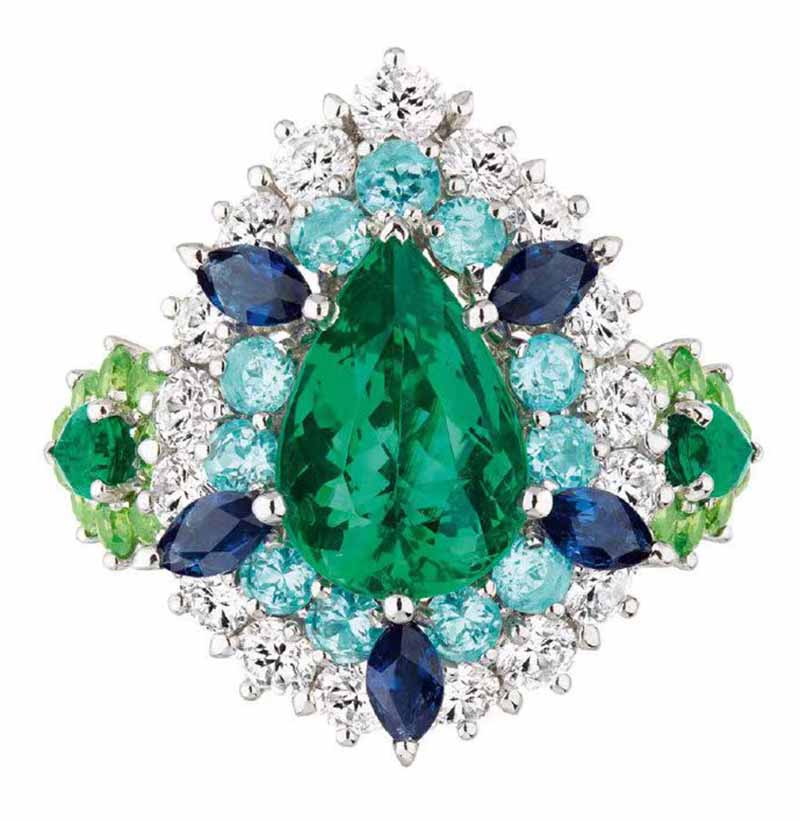
Emerald, the international jewelry industry recognized as one of the “five precious stones”, because of its unique green color makes people fall in love at first sight.
Emeralds have many origins, in addition to the well-known Colombia, Zambia, Brazil. China, Afghanistan, Tanzania and other places also have production.
In 1969, a farmer discovered emeralds in residual scintillates in Tanzania, and in the early 1970s, a primary emerald mine was discovered on the western shore of Lake Manyara in northern Tanzania.
Emeralds here are often associated with minerals such as variscite, yellow chrysoberyl, apatite, spinel, and olivine.
The interior usually contains abundant inclusions of quartz, emerald, and blue beryl. They are linearly arranged or randomly distributed, and sometimes titanium-rich almandine, illite, and heliotrope garnet are present.

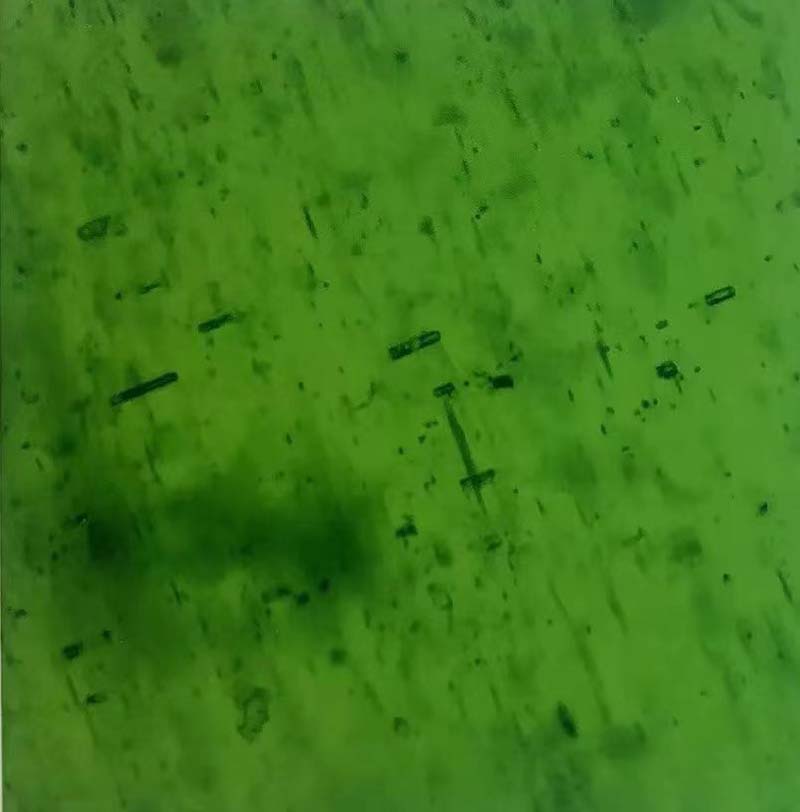
Ruby:
Tanzania is one of the important producers of rubies.
Rubies were discovered as early as the beginning of the 20th century at Lungido in northern Tanzania. Later, ruby mines were discovered in Omba Valley, Morogoro, Songai’a, Tunduru and other places.
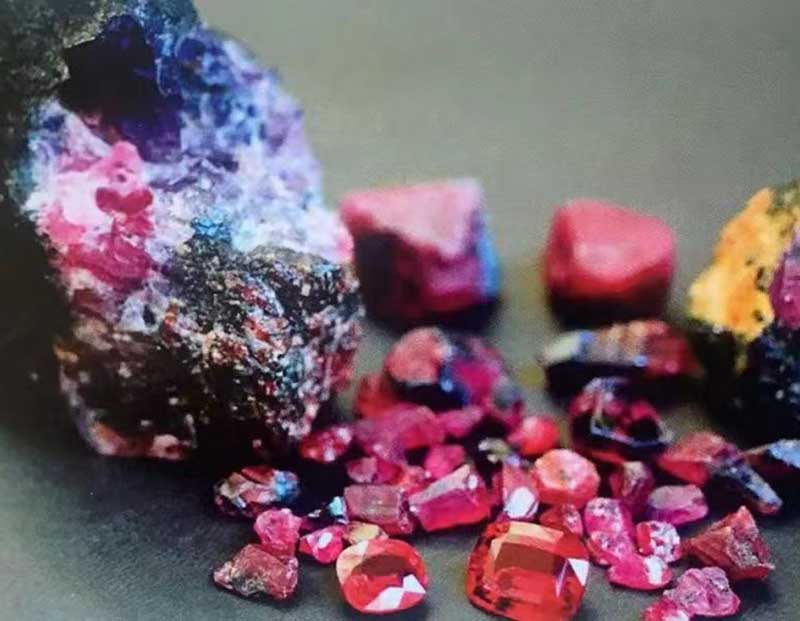
Currently, rubies produced in Tanzania are concentrated in four major mining areas, namely, Winza, Umba, Morogoro, Tunduru and Sungaiya.
In 2008, rubies of excellent quality were discovered in Winza, central Tanzania. The fact that they are available for sale without being heated has caused a huge response in the market.
The rubies produced here come in a variety of colors, mainly pink, red, deep orange-red and purple.
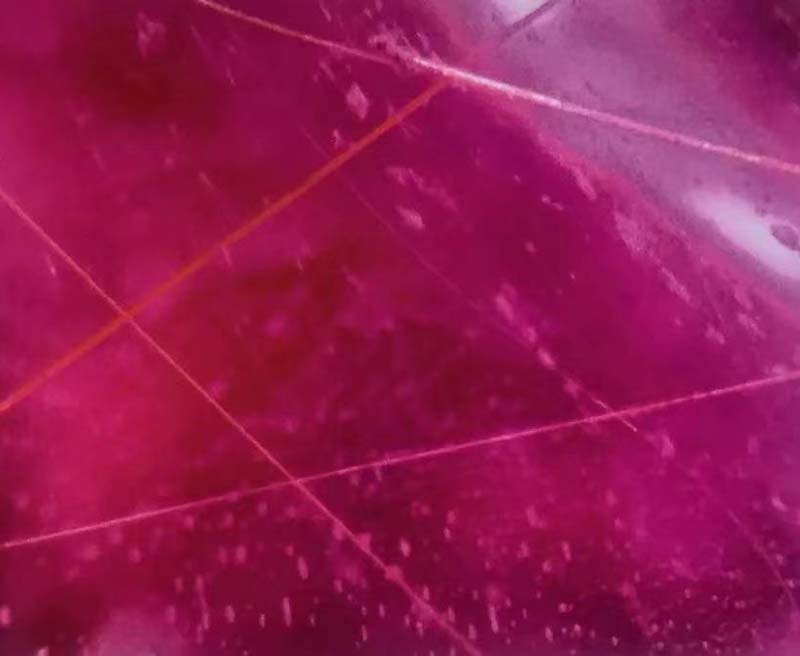
The transparency is high, and distinct blue color bands or bluish-purple flaky areas are visible.
It is common to see rhombic bicrystals and a group of “cross-faceted hollow tubes”, and sometimes three groups of directions.
In addition to this, long tubular, fibrous, acicular or filamentary inclusions can be found in Winza rubies.
They are especially common in the top-grade Winza rubies.
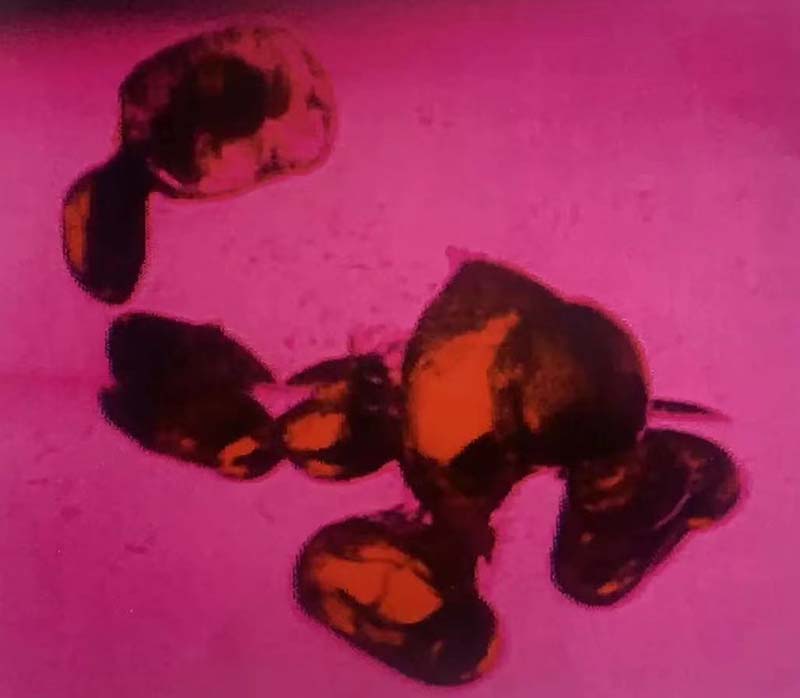
In addition to the Winza ruby, the Morogoro ruby is one of the most representative rubies of Tanzania.
Curved (swirling) structures and flat or angular growth bands can be seen in Morogoro rubies.
One, two or three groups of bicrystals parallel to the direction of the rhombic face are visible. It contains octahedral spinel inclusions, zircon inclusions, apatite inclusions, and pink garnet inclusions.
Sapphire:
In addition to rubies, Tanzania is a famous source of sapphires in Africa.
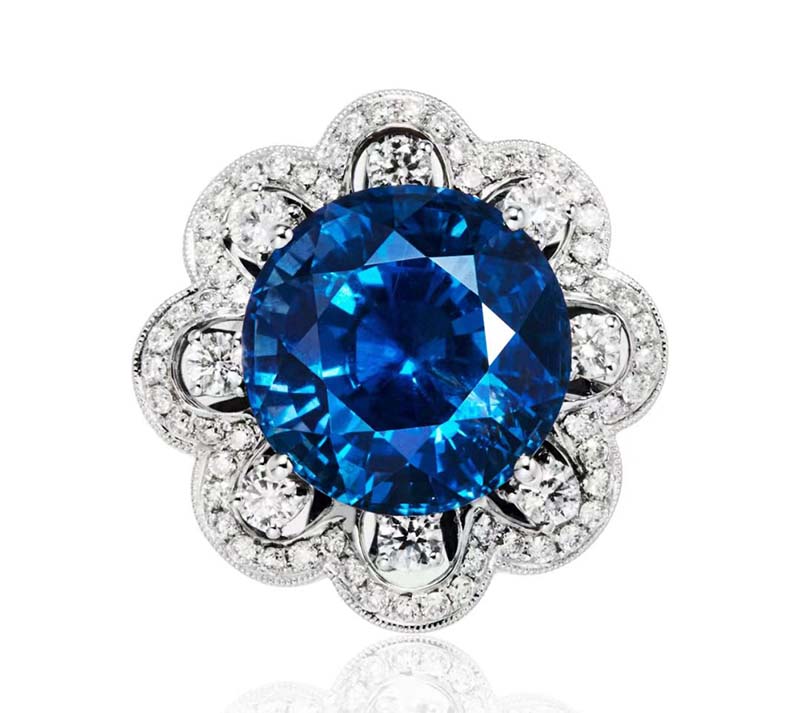
Here the sapphire production is large, tons, the color is mainly blue. Shades between Shandong sapphire dark blue to Sri Lanka blue, grain size to 0.5 – 5cm of the majority.
Tanzania’s sapphire deposits, mainly concentrated in the south of the country’s Ruwuma mining area and the north of the Womba mining area.
The sapphire deposits in the Ruwuma region in the south are concentrated in Tunduru and Sungaiya.
Tonduru produces sapphires in a wide range of colors, covering almost the entire visible spectrum. However, they are usually lighter in color and are known as “chalk colors”.
The most common solid inclusion in sapphires here is zircon. Most zircons are small, colorless, transparent, elongated, or irregularly rounded. Negative crystals and healed cleavages of various shapes and sizes are also common.
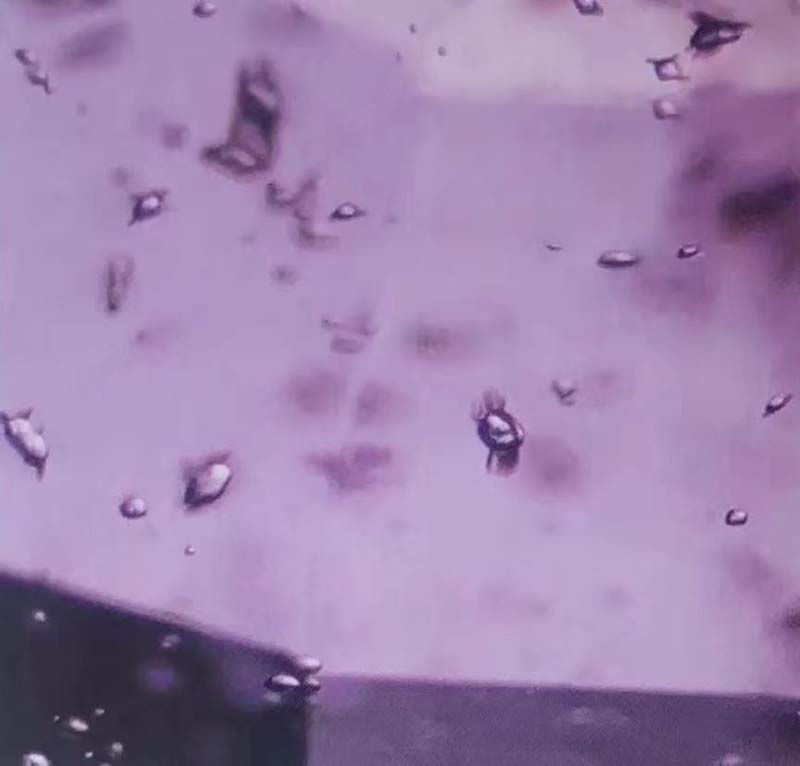
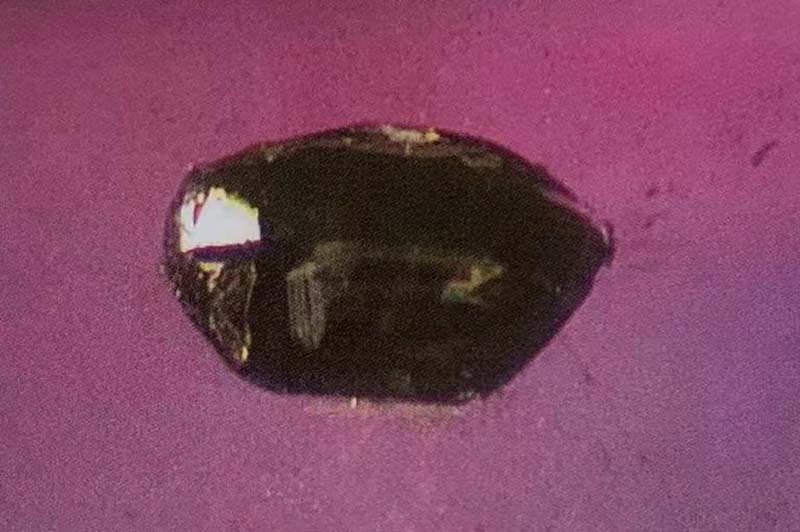
Typical inclusions within the sapphires from the Sungai A mine are characterized by rutile of various shapes and sizes, and sometimes solid inclusions of zircon and chlorite.
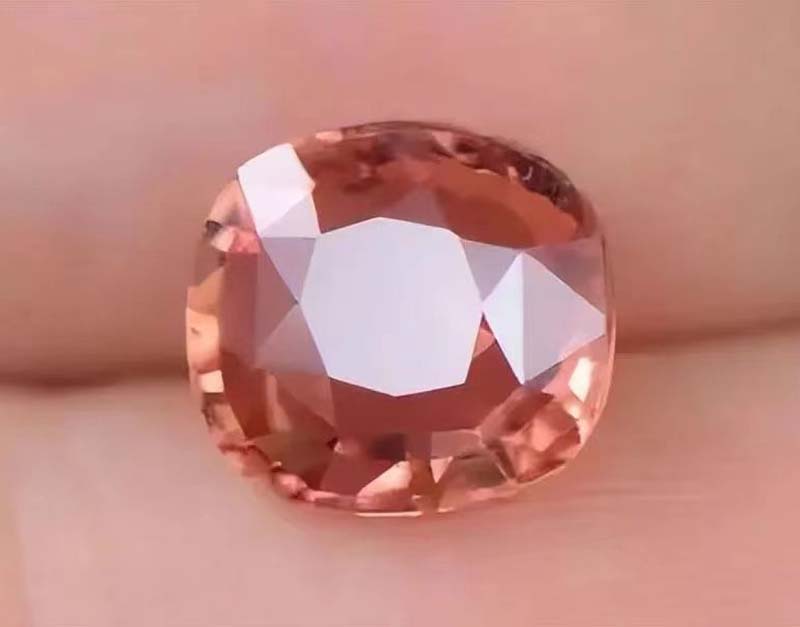
The Umba Valley in the north is also known for its richly colored sapphires.
The most common colors are orange, yellow, violet, purple, peach and others.
Bicolor and variegated varieties are also produced.
Since the 1990s, the orange sapphires from the Omba Valley have come to be known as the “East African Paparacha” because of their resemblance to the Sri Lankan Paparacha sapphire.
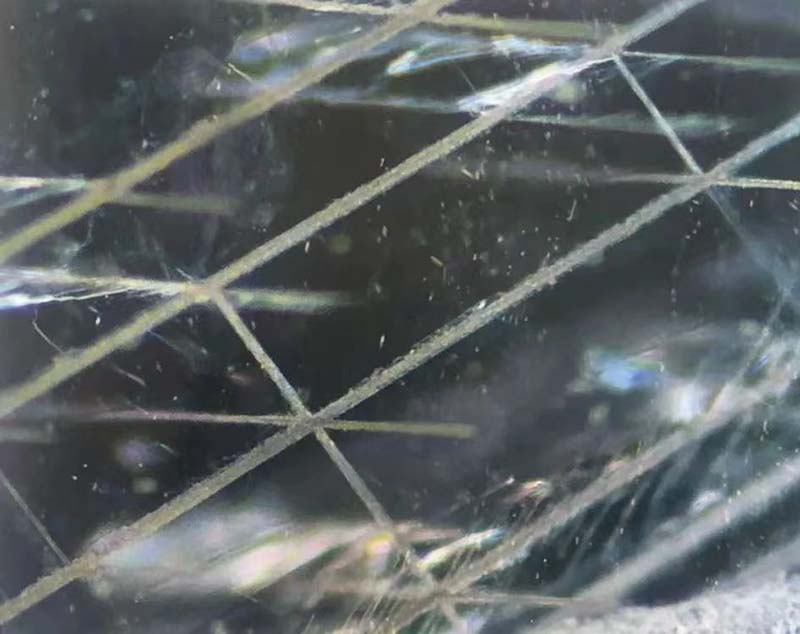
The most obvious inclusion in the sapphires produced here is the scaffolding structure.
In addition, there are numerous colorless, transparent, rounded zircon crystals.
Spinel:
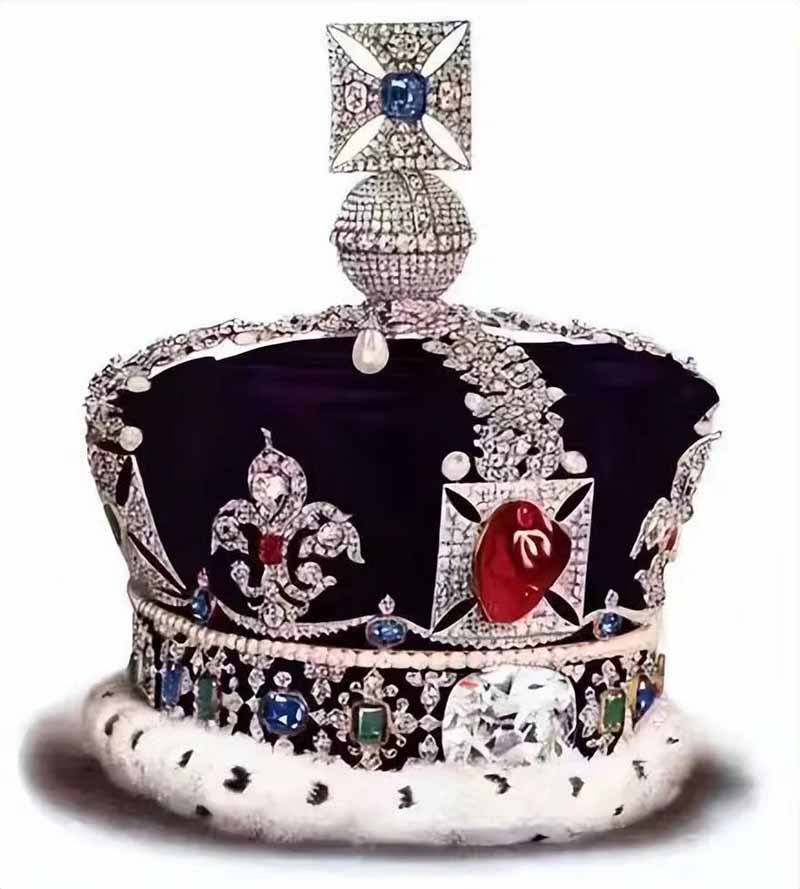
Spinel, the new “dark horse” of colored gemstones, has become the world’s best “impostor” because of its resemblance to ruby.
Once set in the Russian tsar, the British imperial crown above.
Currently, the world’s spinel production area is mainly distributed in Burma, Vietnam, Sri Lanka, Thailand, Afghanistan and other places.
Among them, Tanzania is famous for producing Mahenge spinel, a bright pink spinel with its own neon color.
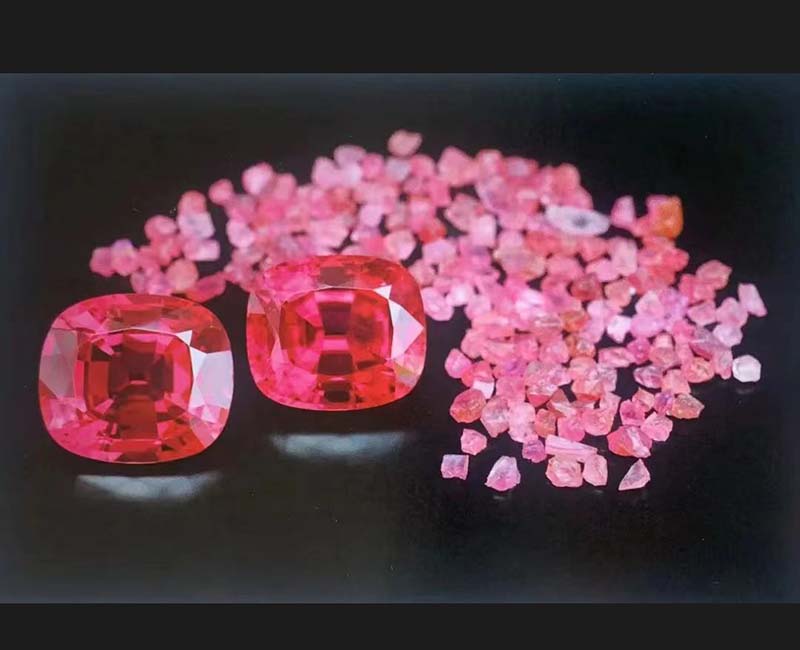
Spinel was first discovered in the 1980s in Tanzania’s Morogoro Province within the barite rocks neighboring Matombo and Mahenge. A number of spinel occurrences were later discovered in Songai’a and Tunduru.
In 2000, high quality spinel crystals were discovered in the white marble veins of the Ipanko area near Mahenje.
The spinel produced here has large grains and is highly transparent. It is capable of showing shades between red, purple, pink, pink-orange, orange-pink, orange-red, and red-orange. Of these, pink is particularly prevalent.
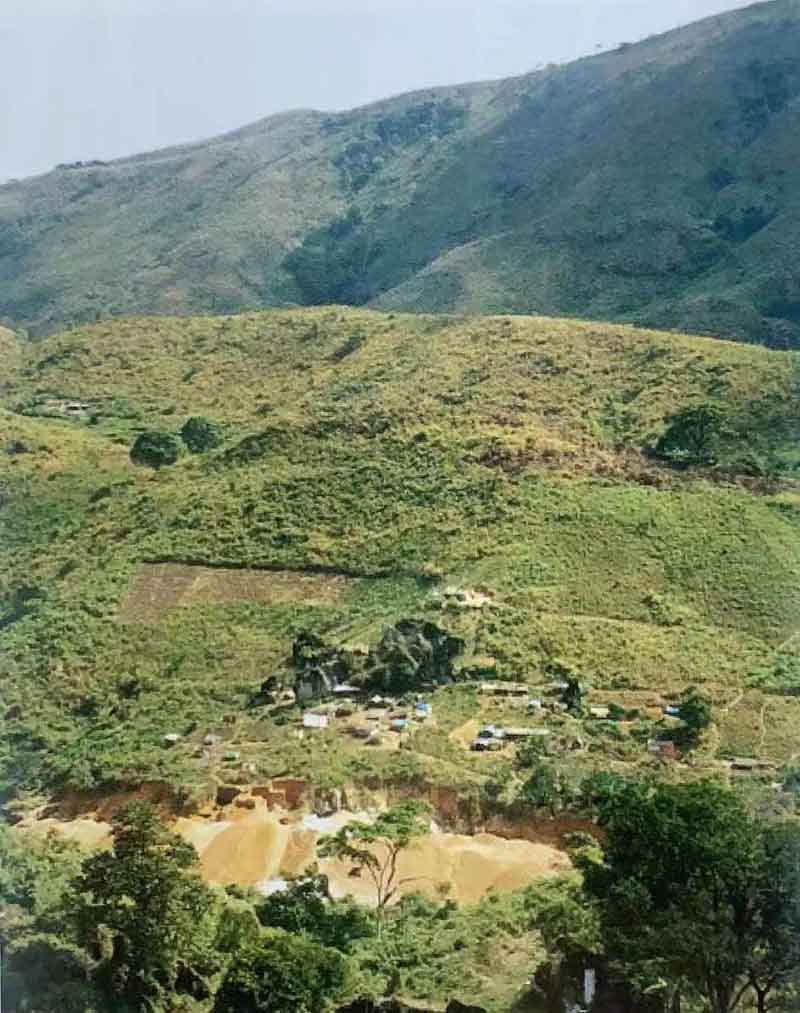
High-quality Mahengyi spinel has a neon coloration and is cut to give it an electric glow.
High-quality Mahengyi spinels, when cut, take on an attractive cherry red color.
Some of the pink spinels of Mahenjie origin have a special velvet touch. This gives the interior of the gemstone a misty feeling, giving it a very “milky” visual appearance.
This is what we often refer to as “milky” Mahengyi (or “milky” for short).
Due to the Mahenggai area spinel production is not high, basically in the state of extinction, Mahenggai spinel prices are rising.
Some unscrupulous merchants even other places of origin with similar color texture of pink spinel also called “Mahenggai spinel”.
Suggestion: Don’t hear “Mahenggai” with its own beauty filter. Whether it’s a gemstone or a jade, quality is always the deciding factor in price.
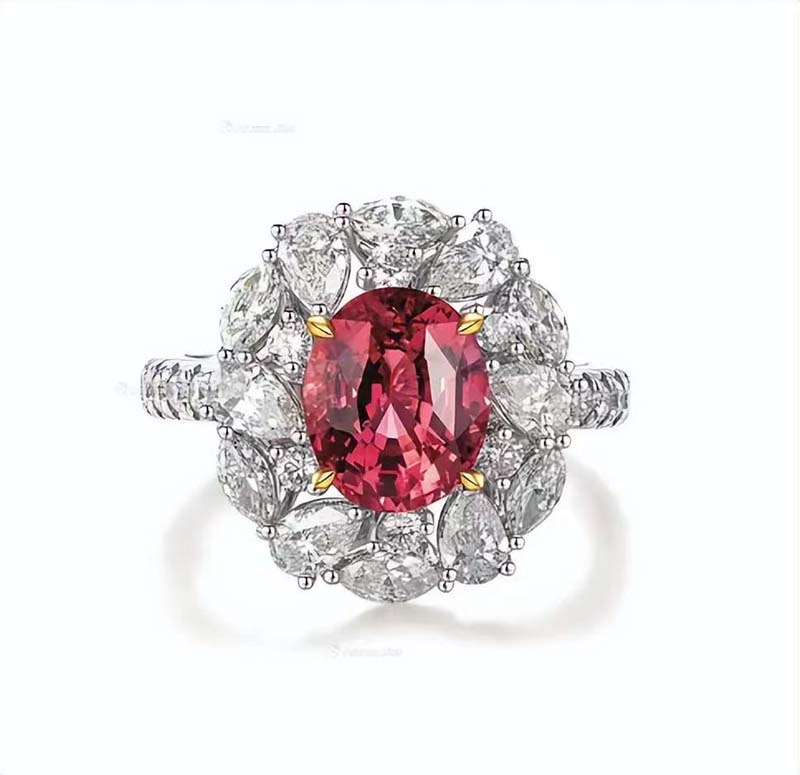
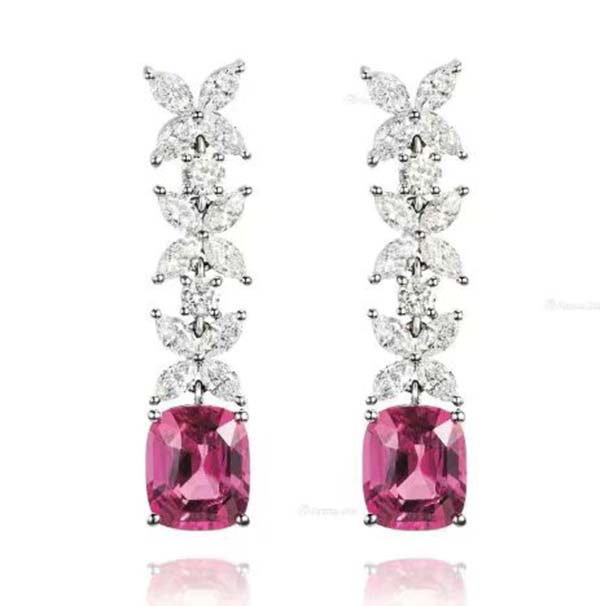
Tourmaline:
Tourmaline, mineralogically known as tourmaline, is a borosilicate crystal. It can be classified according to its color as red, green, blue, etc..
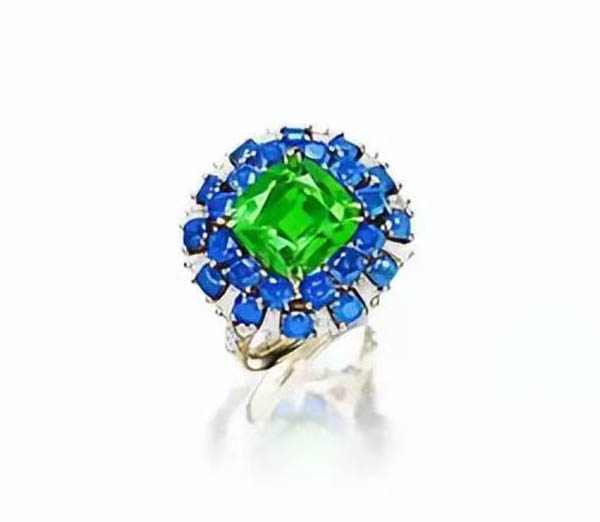
The hardness is around 7, accompanied by internal bubble inclusions and cracks, and good clarity is extremely rare.
Currently, there are more than 300 deposits or sites of tourmaline that have been discovered on all continents of the world.
Gem-quality tourmaline is mainly produced in Brazil, Sri Lanka, Tanzania, Kenya and Mozambique.
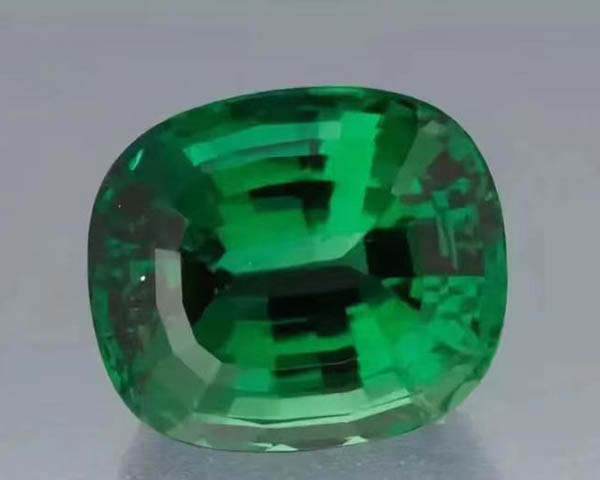
Tanzania produces a chromium-containing magnesium tourmaline known as “chrome tourmaline”.
Compared to the green tourmaline from Brazil, this chrome tourmaline has an intense green color due to the presence of traces of chromium.
Bright and full in color, this high-quality, large-carat chrome tourmaline is one of the most valuable varieties of tourmaline, with low global production.
Tanzanite:
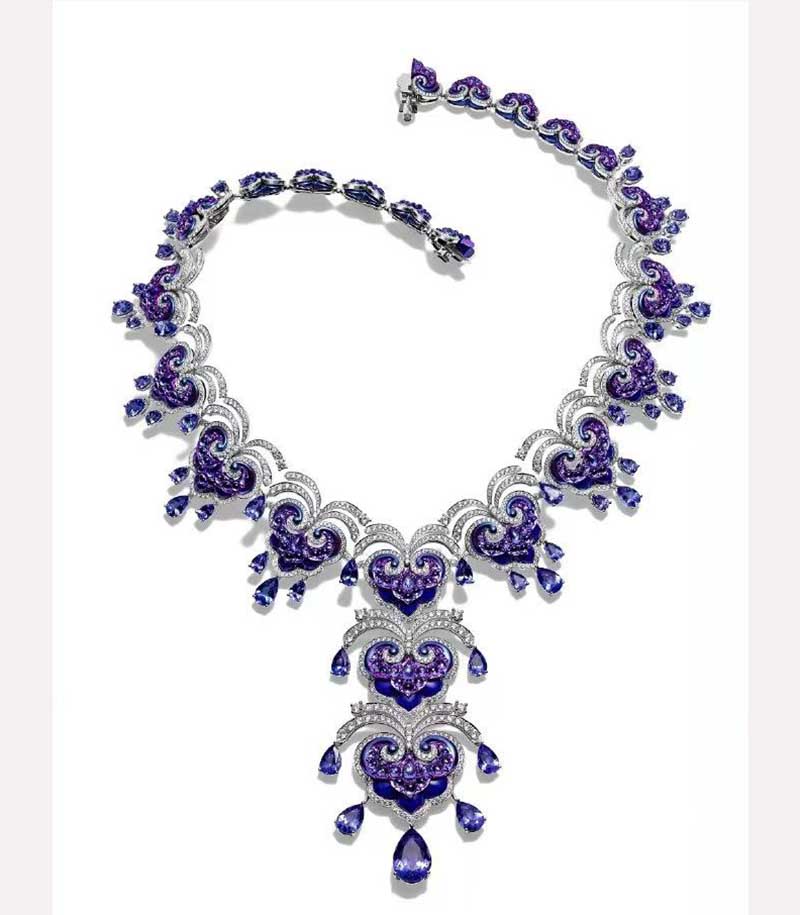
In 1967, a new type of gemstone with an intense blue color was discovered in Tanzania by gemologist Campbell R. Bridges, and named Tanzanite by Henry B. Platt, vice president of Tiffany & Co. It was named tanzanite by Henry B. Platt, vice president of Tiffany & Co.
The mineral name for tanzanite is zoisite, a silicate mineral. Tanzanite is also known internationally as tanzanite, and is commonly found in the blue-purple color of gem-quality tanzanite.
One interesting feature of tanzanite is its multicolor nature. It is highly trichromatic.
In 1969, the American Mineralogist magazine described the multidirectional colors of tanzanite as “reddish-purple, dark blue, and yellowish-green”.
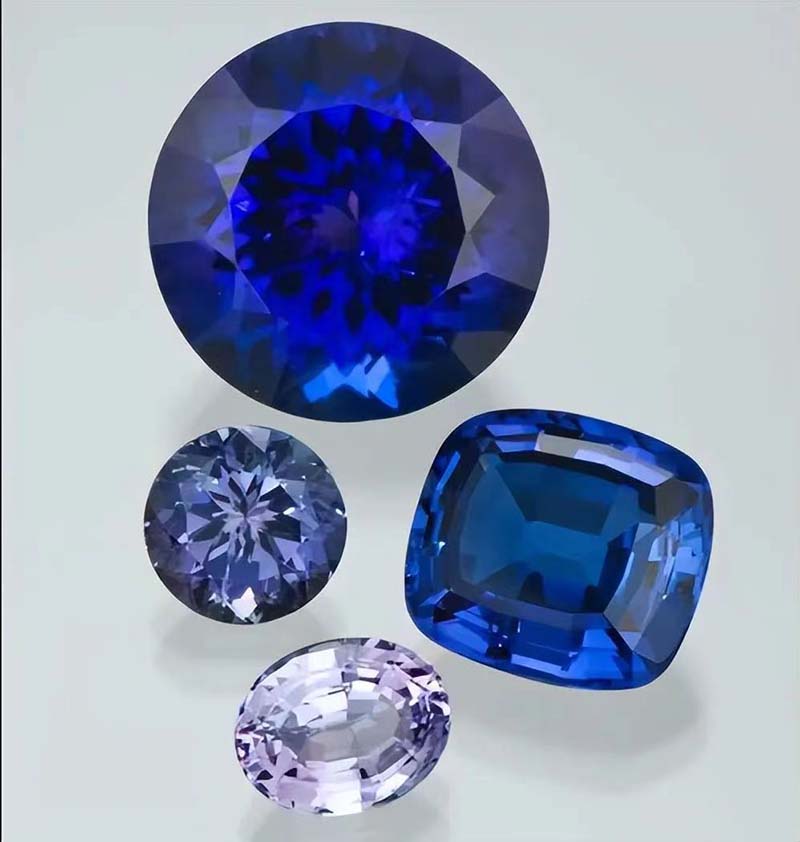
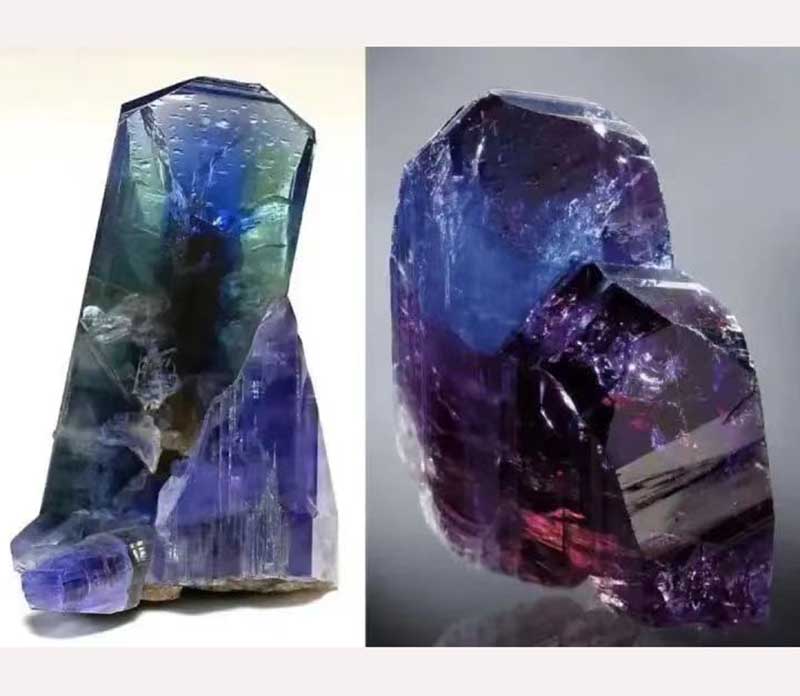
In fact, in addition to the blue-purple color, natural tanzanite commonly has a greenish-blue color with brownish tones. There are also grays, browns, yellows, greens and light pinks.
Most tanzanites on the market today are heat-treated to remove brownish-green, yellowish-green, grayish-yellow, and brownish-yellow tones. Deepening enhances blue and violet tones.
For a long time, the finest tanzanite has often been regarded as an equal replacement for sapphire because of the rich deep violet-blue color it can exhibit.
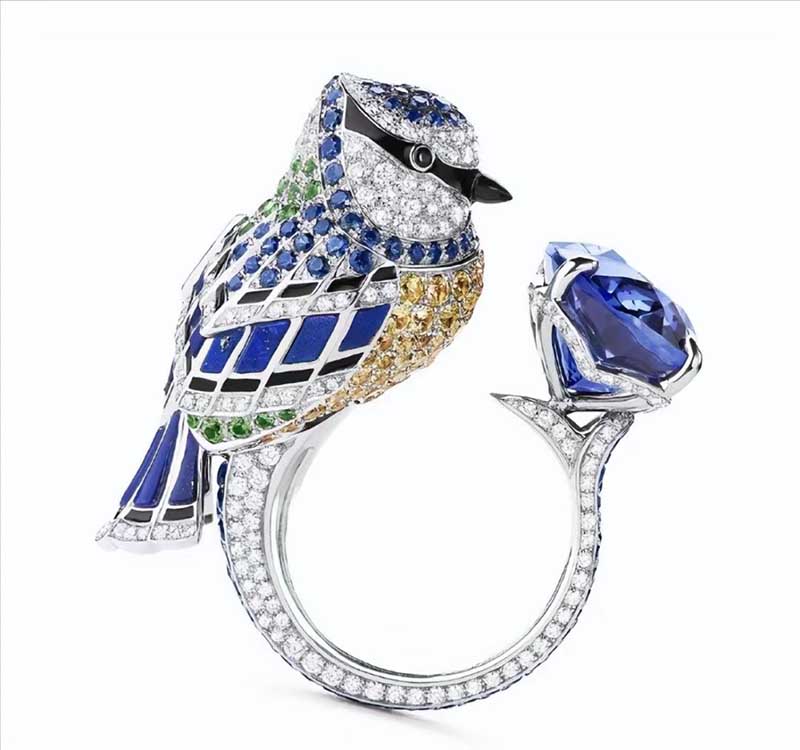
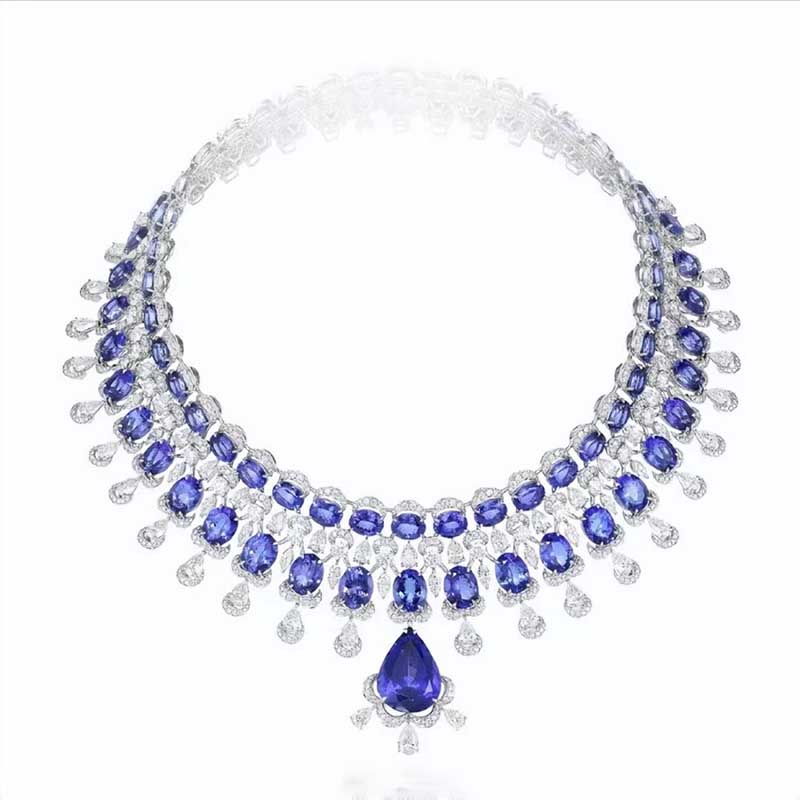
But it also has the disadvantage of not being hard enough. So durability-wise, it’s still sapphire that’s superior.
In addition to Tanzania, Tanzanite has also been found found in the United States, Mexico, Greenland, Austria and Switzerland. But in the world, only Merelani Mountain in Tanzania mines Tanzanite on a commercial scale.
Tsavorite:
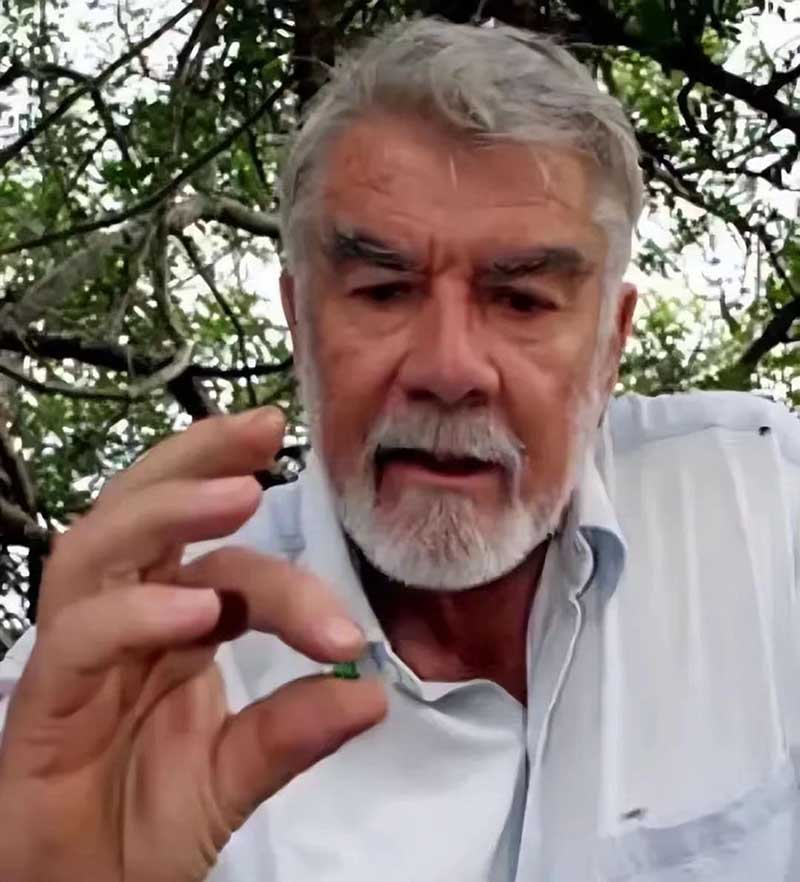
In addition to tanzanite, gemologist Campbell R. Bridges discovered another gemstone in Tanzania: tsavorite.
Campbell R. Bridges first discovered green calc-alumina garnet (tsavorite) in Tanzania in 1961, but unfortunately, due to the Tanzanian government’s nationalization policy, the exploitation of Tanzanian-origin tsavorite ended in failure.
At the end of 1970, Campbell R. Bridges, with the support of Tiffany, discovered this green garnet again in the Tsavo National Park near the border between Kenya and Tanzania, with its vivid color and full of vitality.
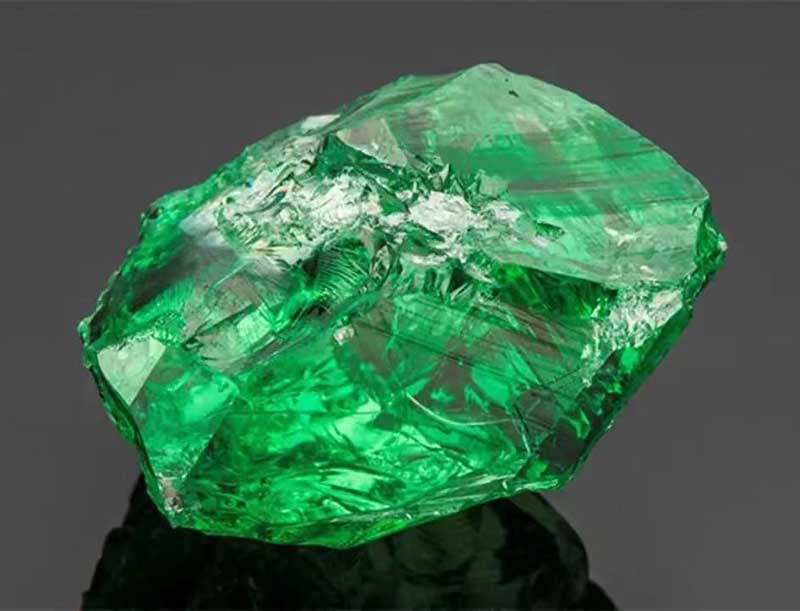
In late 1973, Campbell R. Bridges, along with Henry B. Platt, then president of Tiffiny, named the newly discovered green chalcocite garnet “tsavorite”.
The “tsavorite” is a green calc-aluminum garnet, a new gemstone.
Its general characteristics can be summarized as the “three highs”: high color saturation, high brightness and high clarity.
High-quality tsavorites are often characterized by an intense, bright green color that does not deviate from the original color, which some people refer to as “electric green”.
If there is a hint of blue, it can give the impression of “emerald green”.
The high luminosity of tsavorite is due to its high refractive index (1.73-1.75), and fine-cut tsavorite stones are often characterized by intense fire.
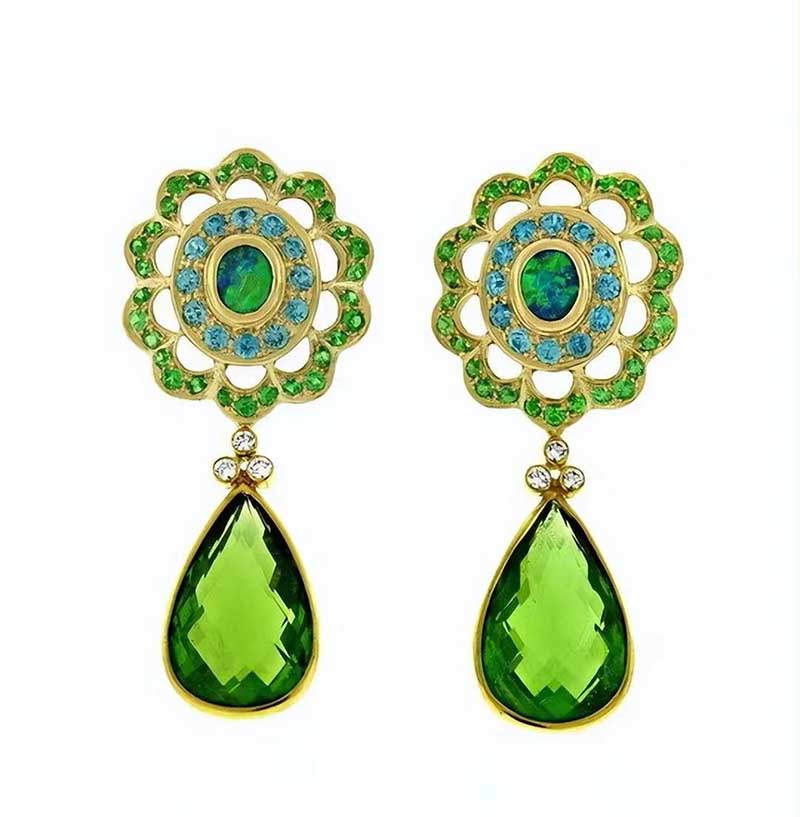
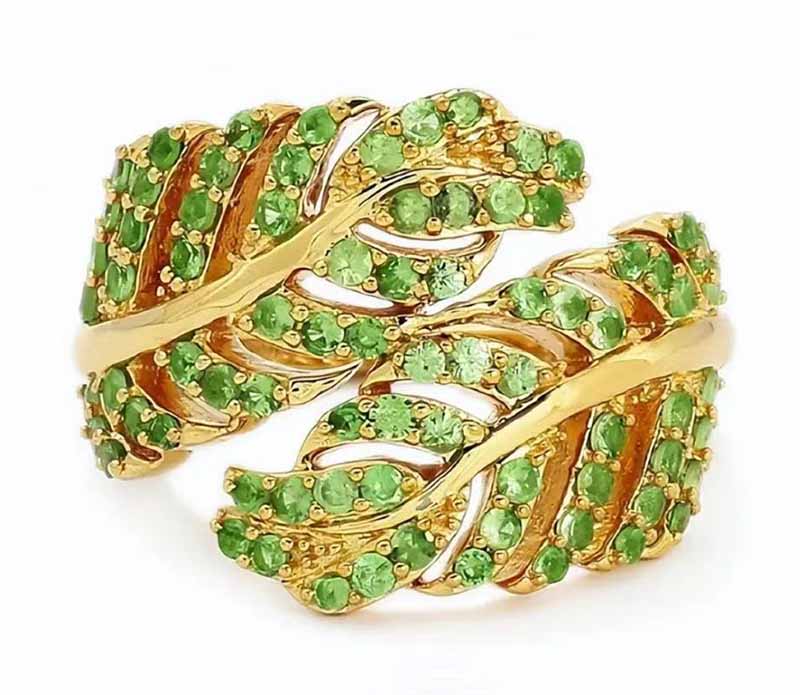
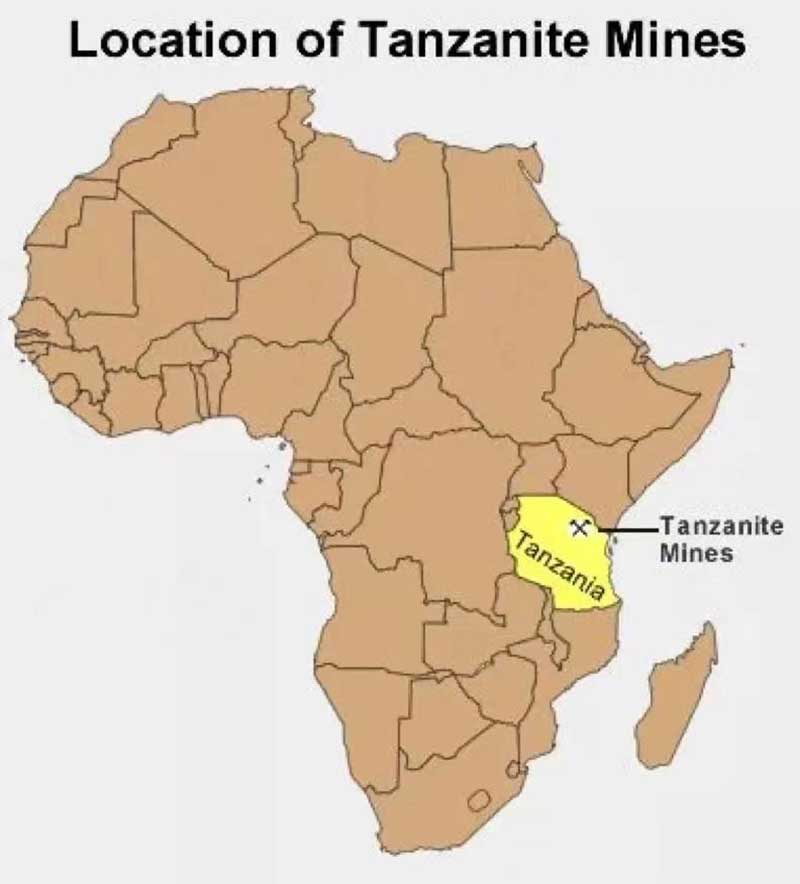
The hardness of tsavorite is also perfectly in line with the hardness scale of 7 to 7.5 on the Mohs scale, which passes the gemstone hardness “score line” perfectly.
For this reason, tsavorites have been described as having “all the perfect qualities of a top quality gemstone and more”.
Although the quality of tsavorite is excellent in all respects, the Tanzanian government’s policy of nationalization has limited the flow of tsavorite from this source, resulting in very low production and low marketability.
Vanadium Emerald:
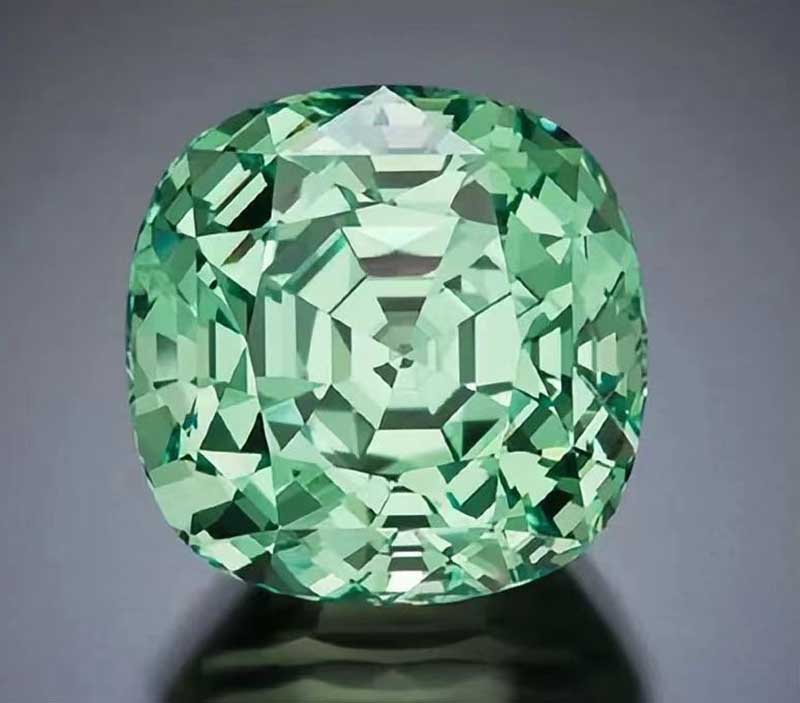
Vanadium emeralds were first discovered in Tanzania in the mid-1990s. It has since been found in Llakaka, Madagascar, Sri Lanka, and Mogok, Burma.
The addition of vanadium and chromium gives vanadium chrysoberyl a distinctive minty green hue, which makes it look quite different from the common yellowish-green chrysoberyl colored by iron.
This makes it look quite different from the common yellow-green chrysoberyl colored by “iron”.
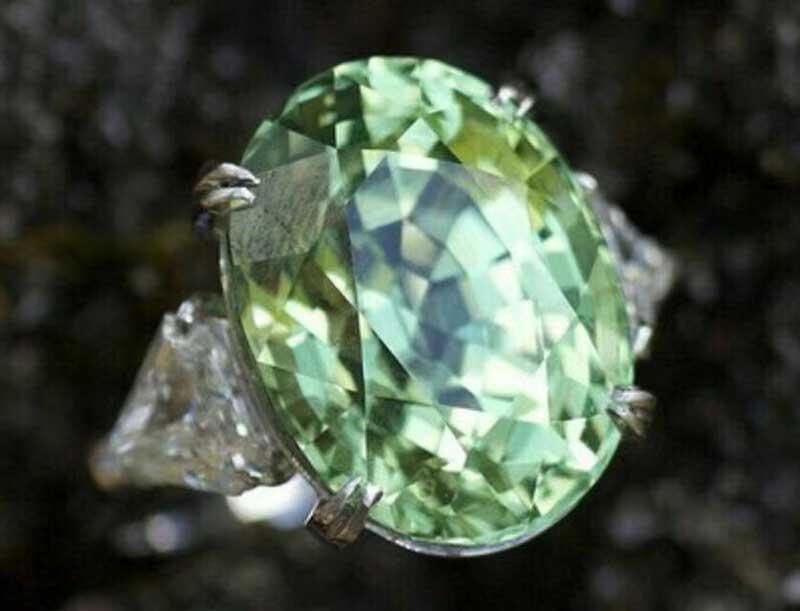
Most vanadium emeralds are a fresh mint green color, with a few reaching a brilliant green close to that of emerald.
High-quality vanadium emeralds are sought after by gemstone enthusiasts and collectors as a niche gemstone, and are difficult to find on the general market.
Because of its beautiful color, scarcity, and excellent gemological parameters, vanadium emerald has always commanded a high price.








